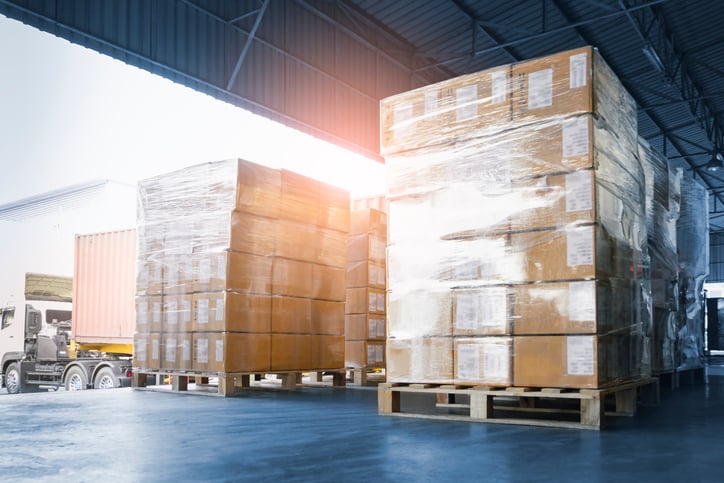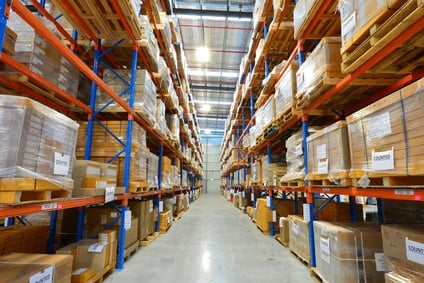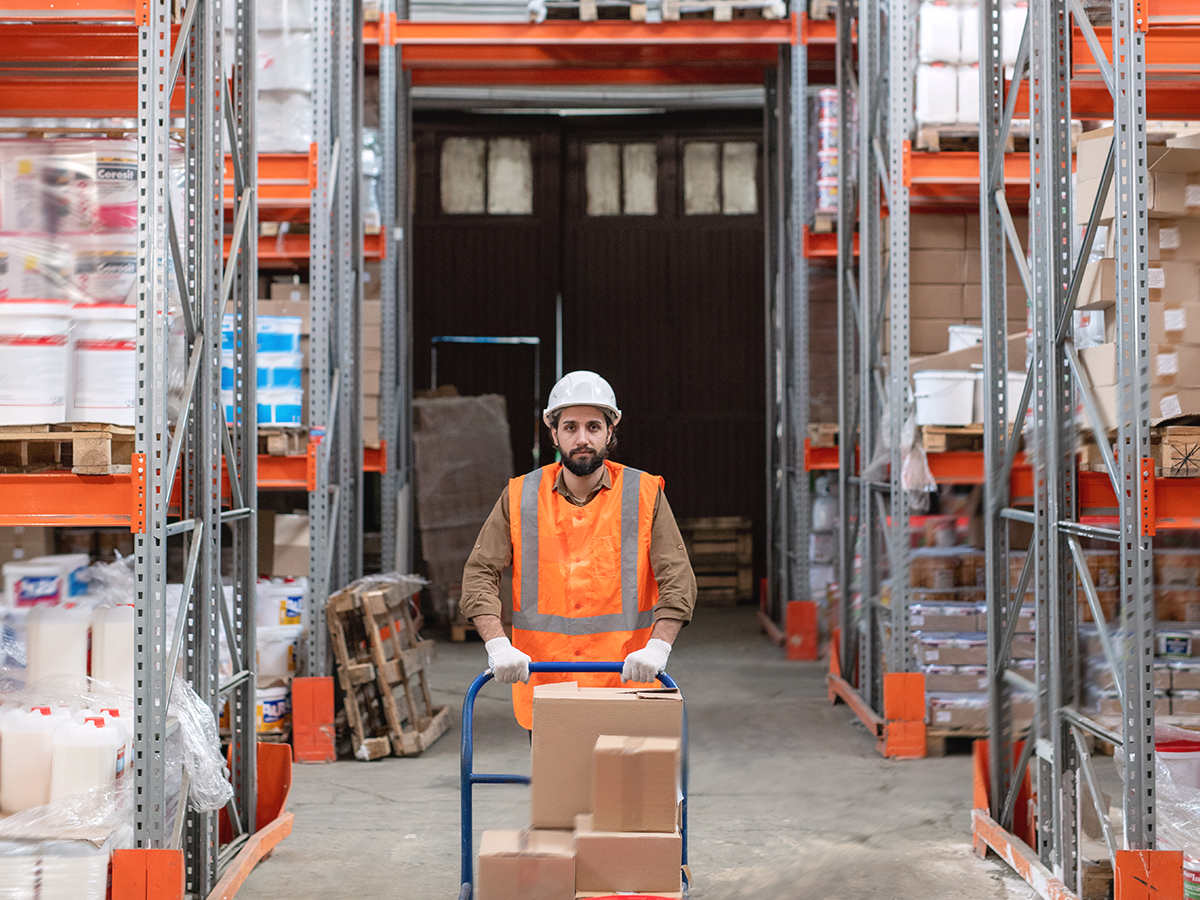Transportation Services
Learn What's Working
Assess Available Options
Partner with Visigistics
Mexico Logistics, Transportation and Integrated Logistics Solutions
Welcome to Visigistics for shipping cargo in Mexico!
We are your reliable partner in logistics and transportation, specialized in providing comprehensive solutions for your shipping needs. As a leading freight forwarder, we excel in international logistics and offer top-notch third-party logistics (3PL) services.
With our extensive experience in the industry, we understand the importance of comprehensive logistics to ensure efficiency and punctuality in every shipment. Our expert team is dedicated to providing you with customized solutions that perfectly fit your specific requirements.
Whether you need land, sea, or air transportation, we have an extensive network of partners and a fleet of modern cargo trucks to meet your shipping needs efficiently and safely.
At Visigistics, we are committed to your satisfaction and strive to exceed your expectations at every step of the process. Trust us to handle your cargo with care and professionalism while you focus on growing your business.
Contact us today and discover how we can optimize your supply chain with our world-class logistics and transportation solutions!

3 Ways Visigistics Helps Your Business to Get Stuff Done:
How to Get Started
Learn What’s Working in Today’s Market
Evaluate how to survive in today’s market
Assess Options for Your Business
See solutions that are working for other companies
Partner with Visigistics to get stuff done
Get stuff done with Visigistics Solutions

Visigistics has the experience, relationships, and TMS tools needed to Optimize your Mexico freight brokerage needs
Visigistics provides integrated logistics solutions to help companies streamline shipping processes, improve on-time performance, and reduce claims while reducing overall costs.
We work with our customers to understand their needs and develop a solution to help them create reliable supply chains at a lower cost.

Full Truck Load

Less Than Truckload (LTL)

International Logistics / Freight Forwarder / Ocean Freight Shipping

Warehousing & Fulfillment
.png?width=1000&height=500&name=Hubspot%20Featured%20Image%20(3).png)
Freight Brokerage / Brokers de carga

Refrigerated LTL and Truckload
Our Services
Please don't hesitate to contact us about your logistics and supply chain needs.
Contact Us
Our consultants will work with you to determine if we are a fit for your project. If we don't think we are a fit we will be glad to give you a referral to someone who we think can.
Experienced in Mexico Logistics, Transportation, and 3PL Warehousing
Below are some frequently asked questions about Mexico Logistics, transportation and 3PL Warehousing:
For intermodal freight, the allowable weight is capped at 42,500 pounds. This weight limit ensures safe and efficient transportation across various modes, such as trucks, trains, and ships. It's crucial to adhere to this restriction to avoid penalties and ensure smooth logistical operations.
If you need to transport cargo exceeding this weight, consider dividing the load into multiple shipments. Always confirm with individual carriers, as they may have specific requirements or offer solutions for heavier loads.
Compliance with these weight limitations helps prevent delays and contributes to a safer, more reliable supply chain.
The significance of dray distance from intermodal ramps lies in its impact on transportation efficiency and costs. When the origin and destination are situated within 50 to 100 miles of an intermodal ramp, several advantages emerge.
First, shorter distances mean reduced fuel consumption and lower trucking expenses. This is crucial for controlling overall shipping costs. Additionally, proximity to intermodal ramps often leads to faster transit times. Goods can be moved quickly from trucks to trains or vice versa, minimizing logistical delays.
Furthermore, shorter dray distances reduce the likelihood of delays caused by traffic or road conditions, contributing to more reliable delivery schedules. Overall, keeping dray distances within the 50 to 100-mile range enhances the efficiency and cost-effectiveness of the intermodal transportation process.
Switching from truckload to intermodal containers can offer considerable savings and efficiency for shippers. On average, this modal conversion can cut transportation costs by about 15%. This cost reduction is primarily possible if the shipment can tolerate an additional day in transit compared to traditional trucking.
Several factors make intermodal transportation advantageous:
- Haul Length: Ideal for distances of 700 miles or more, where intermodal proves to be more cost-effective.
- Proximity to Ramps: The origin and destination should be within 50 to 100 miles of an intermodal ramp for optimal savings.
- Freight Weight: Cargo must not exceed 42,500 pounds to be suitable for intermodal transport.
By leveraging these characteristics, shippers can enhance their logistics strategy, optimizing both cost and efficiency.
Switching to intermodal transportation can result in substantial cost savings compared to traditional truckload shipping. The key benefit lies in the potential to reduce transportation expenses by an average of 15%. Here's how:
Benefits of Intermodal Transportation
Firstly, consider the length of haul. For distances of 700 miles or more, intermodal becomes a viable option that can lower costs. The efficiency of rail transport over long distances plays a significant role here, as it generally costs less per mile than trucking.
Next, examine the dray distance. This is the distance from the origin and destination points to their respective intermodal ramps. Optimal savings are realized when this distance is between 50 to 100 miles. Shorter dray distances minimize the added costs of transferring goods between trucks and rail, enhancing overall cost-effectiveness.
Additionally, weight limitations are crucial. Intermodal shipment is ideal for freight that does not exceed 42,500 pounds. Staying within this weight limit ensures that the load can be handled efficiently by the intermodal system without incurring extra fees or requiring specialized equipment.
By leveraging these critical factors—haul length, dray distance, and weight restrictions—shippers can achieve notable savings and make their logistics operations more economical.
The Critical Role of After-Hours Service in Choosing a Freight Broker
When selecting a freight broker, after-hours service is a crucial factor to consider. Businesses often operate beyond the typical 9-5 schedule, and freight issues can arise at any time. If your broker only offers a standard call center after hours, your company might face frustrating delays in resolving urgent matters.
Here’s why robust after-hours service matters:
- Immediate Issue Resolution: Problems with freight can occur at any hour. Access to knowledgeable representatives around the clock ensures swift action is taken, minimizing disruptions.
- Enhanced Reliability: A broker with 24/7 service demonstrates a commitment to your business, ensuring that you are covered at all times.
- Peace of Mind: Knowing that expert help is just a call away, regardless of the hour, lets you focus on other critical areas of your business.
Choosing a freight broker with comprehensive after-hours support can make the difference between a minor hiccup and a major setback.
When choosing a reputable freight broker, it's essential to check for specific certifications and affiliations that signify their credibility and adherence to industry standards. Here are key certifications and affiliations to look for:
-
Transportation Intermediaries Association (TIA): This certification ensures that the broker adheres to the highest ethical and operational standards in the industry.
-
Intermodal Association of North America (IANA): Membership in IANA indicates that the broker is committed to efficient and effective intermodal transportation solutions.
-
EPA SmartWay Partner: This affiliation showcases a broker's commitment to sustainability and environmentally friendly transportation practices.
By ensuring your freight broker holds these certifications and affiliations, you can feel confident in their professionalism and commitment to quality service.
When it comes to shipping and logistics, understanding the difference between a cargo liability policy and a contingent cargo policy is crucial for safeguarding your freight.
A cargo liability policy primarily protects the carrier, covering damages or losses to the cargo while it is under the carrier’s responsibility. This type of policy ensures that the carrier is liable for the goods from the point of pickup to delivery, mitigating risks associated with transportation mishaps.
On the other hand, a contingent cargo policy is designed to protect the shipper. It acts as a backup in case the carrier’s insurance fails to fully cover a claim. This means if the carrier’s policy is inadequate or denies a claim, the contingent cargo policy steps in to cover the loss. It’s essentially an extra layer of security, ensuring the shipper isn’t left vulnerable.
Here are some key distinctions:
-
Coverage Responsibility:
- Cargo Liability Policy: Protects the carrier.
- Contingent Cargo Policy: Protects the shipper as a secondary option.
-
Policy Activation:
- Cargo Liability Policy: Active throughout the transport process.
- Contingent Cargo Policy: Kicks in only when the carrier's policy is insufficient or denies the claim.
-
Main Beneficiary:
- Cargo Liability Policy: Carrier liable for cargo during transit.
- Contingent Cargo Policy: Shipper protected from potential carrier insurance shortcomings.
Understanding these differences ensures you select the right type of insurance coverage based on your role and needs in the shipping process. Always request to examine the insurance details thoroughly beforehand, and ask for a certificate of insurance (COI) to confirm the policy's validity and terms.
When evaluating a freight broker's insurance policy, there are several vital factors to consider:
Type of Policy: Firstly, determine whether the policy is a shipper’s interest policy or a contingent cargo policy. A shipper's interest policy covers your freight more comprehensively, while a contingent cargo policy only activates under specific conditions.
Deductible: Investigate the deductible amount associated with the policy. A higher deductible may lower premium costs but can also mean more out-of-pocket expenses in the event of a claim.
Inclusion on Policy: Ensure you are listed on the policy as an additional insured party. This inclusion can offer you direct protection and expedite the claims process if an issue arises.
Certifications: Request and review a certificate of insurance (COI). This document validates the policy's existence and provides key details about the coverage, including policy limits and effective dates.
Coverage Details: Not all insurance policies are created equal, so scrutinize the coverage specifics. Confirm that the policy covers all potential risks associated with your freight and the transport route.
Lastly, don't hesitate to ask the broker detailed questions about their insurance coverage. Doing your due diligence can save you from significant headaches and financial losses down the road.
A freight broker might offer a comprehensive suite of supply chain services and coaching. These can include:
- In-depth Evaluations: Conducting thorough assessments of your entire supply chain network to pinpoint inefficiencies and opportunities.
- Strategic Planning: Developing customized strategies tailored to optimize your logistics operations and improve overall performance.
- Process Improvement: Recommending actionable steps for enhancing supply chain processes, from procurement to delivery.
- Technology Integration: Guiding the implementation of advanced technologies to streamline workflow and increase visibility across the supply chain.
- Performance Metrics: Establishing key performance indicators (KPIs) to track and measure the effectiveness of your supply chain.
Additionally, coaching services might focus on:
- Skill Enhancement: Training your team on best practices and cutting-edge techniques in supply chain management.
- Industry Insights: Providing insights and trends to keep you ahead of the curve in a rapidly evolving marketplace.
- Problem-solving Workshops: Hosting sessions to collaboratively solve specific challenges and foster a culture of continuous improvement.
With these services, a freight broker can help transform your supply chain into a well-oiled machine, ensuring it runs smoothly and efficiently.
What is TMS Technology and How Does It Improve Logistics Operations?
In the realm of logistics, Transportation Management Systems (TMS) technology serves as a critical component. But what exactly is TMS technology, and why is it so essential?
Understanding TMS Technology
TMS technology refers to specialized software designed to streamline the planning, execution, and optimization of the physical movement of goods. It provides a centralized platform for:
- Planning transportation routes
- Managing carriers and fleets
- Tracking shipments in real-time
- Ensuring compliance with regulatory requirements
Enhancing Freight Movement and Capacity
One of the primary benefits of TMS technology is its ability to improve freight movement. By leveraging advanced algorithms and real-time data, TMS can identify the most efficient routes, thereby reducing fuel usage and transit times. This efficiency directly translates to cost savings and timely deliveries.
Moreover, TMS technology excels in finding and managing capacity. It offers visibility into available carrier options, enabling logistics providers to make informed decisions quickly. This ability to match freight with the right carrier minimizes delays and maximizes resource utilization.
Improving Communication and Service Levels
Effective communication is vital in logistics. TMS technology facilitates seamless communication between shippers, carriers, and customers. Automated alerts and updates ensure that all stakeholders are informed of any changes or issues in real-time. This transparency builds trust and enhances the overall customer experience.
Supporting Operational Growth
Beyond immediate operational improvements, TMS technology provides valuable insights into logistics operations. Detailed analytics and reporting features allow providers to identify trends, measure performance, and uncover opportunities for growth. With these insights, companies can scale their operations more effectively, staying competitive in an ever-evolving market.
In summary, TMS technology is indispensable for modern logistics operations. It improves efficiency, enhances communication, and supports growth, making it a cornerstone for any logistics service provider aiming to deliver the highest level of service.
Distribution services can significantly enhance a company's logistics in several key ways. By strategically positioning products closer to the end customer, these services ensure faster delivery times, meeting the demand for quicker transit. This proximity not only improves customer satisfaction but also reduces shipping costs, making the process more economical.
Additionally, leveraging expert distribution services allows companies to optimize their supply chain, minimizing warehouse storage needs and freeing up valuable resources. Efficient distribution can also help mitigate the risk of stockouts or overstocking, maintaining better inventory control and responsiveness to market demands.
In summary, distribution services streamline logistics operations, offering speedier, more cost-effective, and reliable delivery solutions that can drive business growth and customer loyalty.
Understanding Managed Transportation Services: Boosting Efficiency and Reducing Costs
Managed transportation services (MTS) provide comprehensive solutions to streamline all aspects of a company’s logistics operations. This service involves outsourcing transportation management to experts who can strategically handle everything from route planning to carrier selection.
How Does MTS Optimize Service?
- Expert Oversight: Logistics professionals manage your transportation needs, ensuring timely deliveries and responsive service.
- Advanced Technology: Utilizing the latest software for tracking and analytics, MTS offers real-time visibility into shipments.
- Customized Solutions: Tailored approaches address unique business requirements, improving transportation efficiency.
How Does MTS Reduce Costs?
- Negotiated Rates: With established carrier relationships, MTS providers secure competitive pricing.
- Efficient Route Planning: Optimized routes reduce fuel consumption and transit times.
- Bulk Shipping: Consolidating shipments lowers costs by maximizing load space.
By choosing managed transportation services, businesses can enhance logistics performance while significantly cutting down on expenses. It's a strategic way to ensure you get the best value and service in your supply chain operations.
The text you provided does not contain any entities that require tagging according to the specified categories. Therefore, here is the text without any modifications:
The Benefits of Pooling and Consolidation for LTL
Pooling and consolidation offer significant advantages for Less-than-Truckload (LTL) shipments.
Cost Efficiency
By combining multiple smaller shipments into a single, larger load, shippers can save substantially on transportation costs. This method leverages economies of scale, allowing businesses to share freight space and split expenses, which translates into lower rates per individual shipment.
Faster Transit Times
Consolidation ensures goods are strategically positioned closer to their final destinations. As a result, transit times are significantly reduced, enabling quicker delivery to customers. This expedited process not only enhances customer satisfaction but also helps in maintaining a competitive edge in the market.
Improved Service Levels
Pooling and consolidation streamline the overall logistics process. With fewer touchpoints and more direct routes, the likelihood of damages and delays decreases. This results in a more reliable and consistent service, giving businesses greater confidence in their supply chain operations.
Advanced Technology Integration
Incorporating Transport Management System (TMS) technology enhances the pooling and consolidation strategy by moving operations from manual spreadsheets to sophisticated cloud-based solutions. This transition facilitates better tracking, real-time updates, and more efficient management of shipments.
Comprehensive Supply Chain Optimization
Beyond just transportation benefits, pooling and consolidation play a crucial role in the broader supply chain strategy. They provide an opportunity for businesses to continuously review and refine their entire supply chain network. Expert consultancy in this area can uncover additional efficiencies and optimize both service and cost performance across the board.
By integrating these practices, businesses can achieve a holistic approach to logistics management that supports their overall growth and operational efficiency.
To optimize pricing and capacity, a freight broker should go beyond just offering competitive rates. Here are some key modes and services they need to provide:
-
Pooling and Consolidation for LTL: Combining smaller shipments into a single load can significantly reduce transportation costs and improve efficiency.
-
Managed Transportation Services: Offer comprehensive solutions that take a holistic approach to optimizing both service and pricing. This can include route planning, load optimization, and continuous monitoring.
-
Distribution Services: Forward-position products closer to the ultimate customer. This strategy allows for quicker transit times and lower shipping costs.
-
Advanced TMS Technology: Transition logistics operations from outdated spreadsheets to cloud-based Transportation Management Systems. This upgrade can streamline operations and improve real-time decision-making.
-
Supply Chain Consulting: Provide expert coaching and one-time reviews of the entire supply chain network. This can uncover inefficiencies and opportunities for cost savings that clients might not see on their own.
It’s crucial for a freight broker to offer a diverse range of services. Smaller brokers might provide limited options that could necessitate a switch later. The more comprehensive the service offerings, the better the opportunity to optimize freight capacity and achieve the best rates, aligning with the ultimate goal of every logistics professional.
Our Latest Article
Below are some recent posts that you may find useful.
- Troy Patterson
- December 23, 2025

